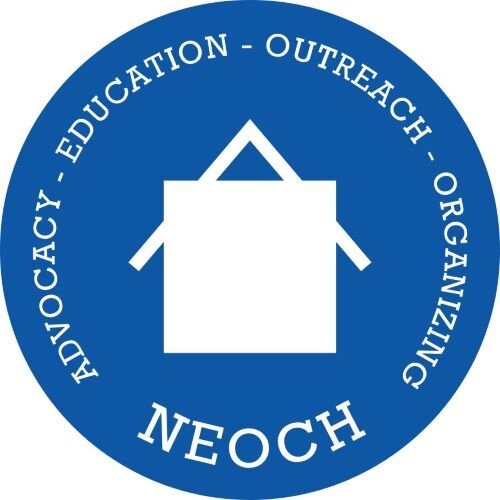Homeless Youth Survive the Foster Care System
by Pamela Vincent
The mission of the Department of Children and Family Services (CFS) is “To assure that children at risk of abuse or neglect are protected and nurtured within a family and with support of the community.” CFS claims to embrace the philosophy that children grow better in families and support this by keeping children close to their families whenever possible through neighborhood foster care. Its programs have the goal of stabilizing and reuniting families that have been weakened through poverty, illness, or crisis, resulting in neglect or abuse to children. (See www.cuyahoga.oh.us/cfs/default.htm)
This raises questions regarding the Foster care system are, and its operation in Cuyahoga County. First, what happens to those children that age out of the foster care system each year that aren’t reunited with their birth families or aren’t adopted, do some of them end up homeless and destitute? The other question is whether homelessness is one of the criteria for removing children from their families?
According to James McCafferty, the director of the CFS Department, fewer than 100 children “age out,” or as they call it are “terminated,” each year from their system. The statistics listed on the website from the department are slightly higher than he quoted.
In 2003 alone, 187 children were terminated from custody. Of those, 118 (59%) were terminated to stable housing situations with little to no risk of homelessness. 69 (41%) were terminated to unstable or unknown housing situations, with significant risk of homelessness. Within the same group of 187 youth, 108 were terminated to stable support systems and 79 (43%) were terminated without a stable support system.
In the last 3 years the Department of Children and Family Services spent between $1,150,228 and $1,493, 740 in operating expenses. A portion of these expenses are for foster parents to support their foster children and for foster children between the ages of 16-18 to go through the Independent Living Program, where they’re taught about life after they’re terminated from the CFS and how to take care of themselves on their own.
There are many options available to these children. The Independent Living staff will assist those children choosing to go on to college or certified training in applying for grants and federal aid. The children who do choose to take advantage of this option, in return, continue to receive a monthly stipend for the duration of the time they remain in school or until the age of 21. The stipend is for living expenses and is the same amount the foster parents received for their care.
McCafferty went on to state that “homelessness is not a criterion for removing a child from his/her parents unless the child is endangered by being exposed to the elements, such as living on the streets in the winter or not properly clothed or fed.” If a parent were endangering a child in that way you would first question whether they were of the right mind and need other assistance and secondndly CFS would try to find the family temporary housing and will put them into hotels for the time being.” McCafferty did not know of any of these cases happening or having been brought to his attention.
In 2003, McCafferty signed a letter obtained by the Homeless Grapevine in that he says, “This letter is to confirm that your children were taken into custody by the Department of Children and Family Services ...due to lack of adequate housing and associated issues related to lack of adequate housing.” The mother that received this letter was not living on the street, but was facing eviction. She was not given the opportunity to go to shelter before the agency intervened.
What of the children that do not go on to college or receive formal training? In 1999 the Federal government passed a law called the “Chafee law” based on work done by the late Senator Chafee from Massachusetts that allows children aging out of the foster system to receive financial aid as they transition into society. There are, however, certain conditions that have to be met to qualify for this aid. The children need to have:
1. Graduated from high school or have obtained a general equivalency diploma or it’s equivalent, as stated in the Chafee Foster Care Independence Act of 1999.
2. Not lived with their parents prior to or after the age 18.
3. Not had any unresolved record of criminal history
4. Or were not currently enrolled in other programs with the CFS and already receiving continuing service.
Each child remaining in care after the age of 18 must sign a voluntary extended care agreement and be assigned a CFS caseworker to monitor them. The children are educated or assisted in finding housing and jobs, writing resumes, preparing meals, doing laundry, managing money, maintaining personal hygiene, and various other life skills. A child will only be discharged from the program before the age of 21 if:
1. he/she refuses to meet with their caseworker, 2. their whereabouts become unknown or 3. they become self sufficient and no longer need the support of the Independent Living program.
Despite this program, 41% are leaving the care of CFS to unknown living conditions and at significant risk of homelessness. Despite having been educated in Independent Living and having continuing support available to them why do some children put themselves at risk for homelessness? Perhaps there isn’t an answer for this but only another question. How do you instill in some one the desire to care for themselves?
Editor’s Note: For more information on the foster care system or the Independent Living Program please call the Cuyahoga County Department of Children and Family Services at: 216/431-4500 or visit the Web site listed above.
Copyright Northeast Ohio Coalition for the Homeless and Homeless Grapevine Cleveland Ohio published July 2004 Issue 65B
